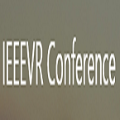With a growing body of research highlighting the therapeutic potential of experiential phenomenology which diminishes egoic identity and increases one's sense of connectedness, there is significant interest in how to elicit such 'self-transcendent experiences' (STEs) in laboratory contexts. Psychedelic drugs (YDs) have proven particularly effective in this respect, producing subjective phenomenology which reliably elicits intense STEs. With virtual reality (VR) emerging as a powerful tool for constructing new perceptual environments, we describe a VR framework called 'Isness-distributed' (Isness-D) which harnesses the unique affordances of distributed multi-person VR to blur conventional self-other boundaries. Within Isness-D, groups of participants co-habit a shared virtual space, collectively experiencing their bodies as luminous energetic essences with diffuse spatial boundaries. It enables moments of 'energetic coalescence', a new class of embodied phenomenological intersubjective experience where bodies can fluidly merge, enabling participants to have an experience of including multiple others within their self-representation. To evaluate Isness-D, we adopted a citizen science approach, coordinating an international network of Isness-D 'nodes'. We analyzed the results (N = 58) using 4 different self-report scales previously applied to analyze subjective YD phenomenology (the inclusion of community in self scale, ego-dissolution inventory, communitas scale, and the MEQ30 mystical experience questionnaire). Despite the complexities associated with a distributed experiment like this, the Isness-D scores on all 4 scales were statistically indistinguishable from recently published YD studies, demonstrating that distributed VR can be used to design intersubjective STEs where people dissolve their sense of self in the connection to others.
翻译:越来越多的研究显示,在实验室环境中如何获取这种“ 自我传播的经验” (STE) 。 迷幻药物(YDs) 已证明在这方面特别有效, 产生主观的阴门学, 可靠地产生密集的STE。 随着虚拟现实(VR) 成为构建新感知环境的强大工具, 我们描述一个名为“ 自我分布的” (Isness- D) 的VR框架, 它利用分布的多人 VR 的独特复杂性来模糊传统的自我边界。 在Isness- D范围内, 参与者群体共同居住一个共同的虚拟空间, 集体体验他们的身体是光亮的活跃的精髓, 并且可以可靠地产生一种“ 腐蚀性煤炭”, 一种新型的血本学内分层, 使机构可以相互融合, 使参与者能够将多种自我传播的自我传播的自我定义 。 在Isness- Daldealalalality 中, 使用一个自我分析的自我分析结果 。



